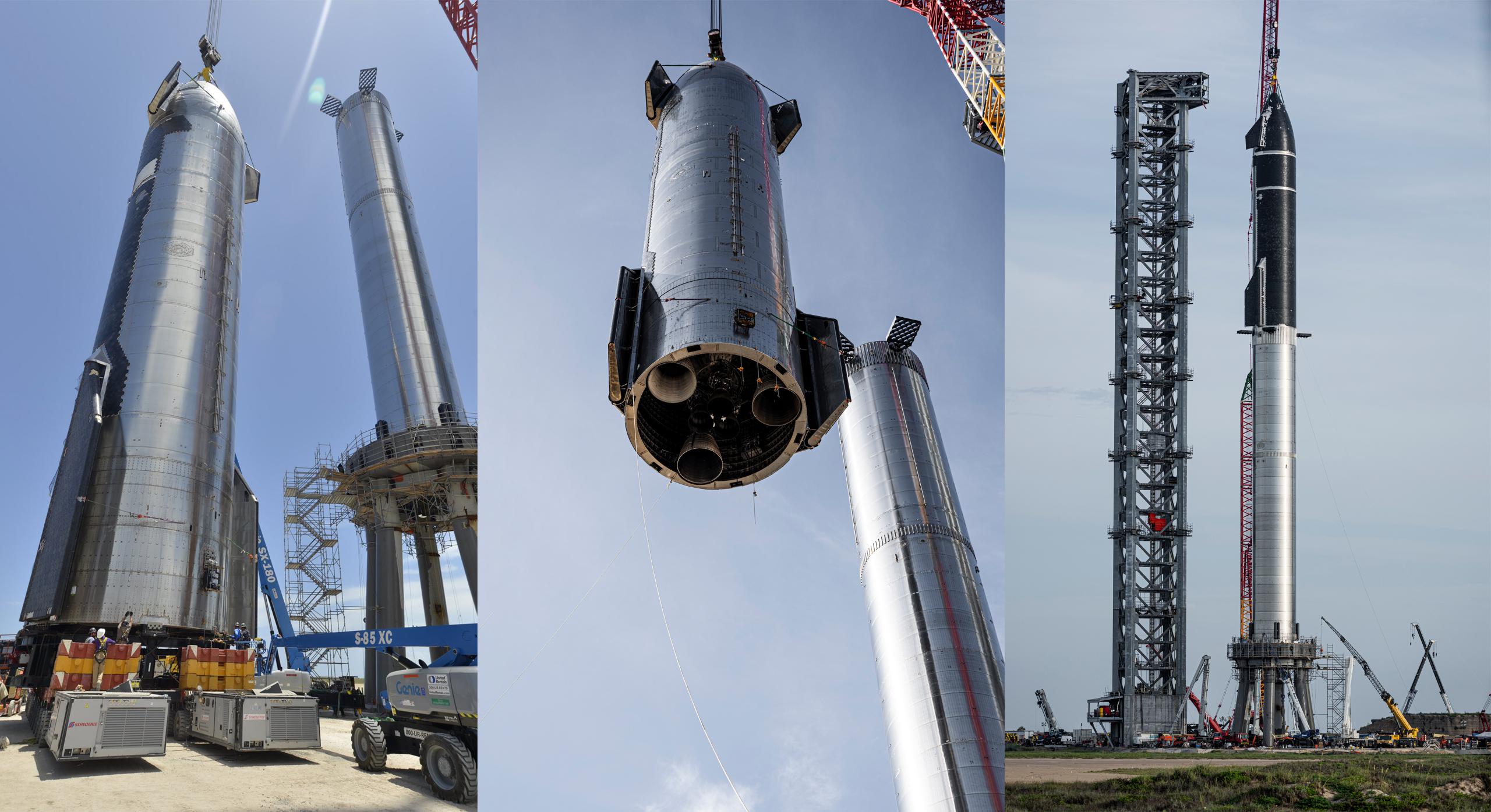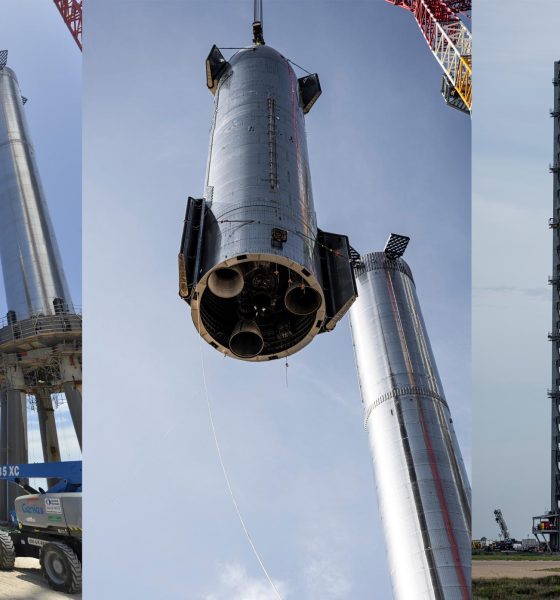

News
SpaceX orbital Starship launch debut officially slips to 2022 – but it’s not all bad news
US government documentation suggests that the Federal Aviation Administration (FAA) aims to complete an environmental review of SpaceX’s orbital Starship launch site no earlier than December 31st, 2021, precluding an orbital launch attempt this year.
In light of the FAA taking until September 2021 to publish the draft of that environmental assessment (EA), a major delay has been the expected outcome for months. The latest development finally makes that delay official, confirming that even in the new best-case scenario, SpaceX will be unable to conduct Starship’s first orbital launch before January 1st, 2022. But while that unfortunate confirmation comes as little surprise, it’s not all bad news.
It’s unclear how accurate the Federal Infrastructure Projects’ “Permitting Dashboard” actually is but the information displayed on the website is specific and detailed enough for it to be deemed trustworthy. If correct, it states that the FAA aims to complete SpaceX’s orbital Starship EA by December 31st. To an extent, that internal estimate relies on the optimistic assumption that the FAA will rule in SpaceX’s favor on the matter and issue either a finding of no significant impact (FONSI).

Of course, there’s a chance that the portal’s claim that the FAA will file Starship’s final orbital EA and conclude the EA process on the same day actually implies that the FAA has already ruled out the worst-case scenario (a no action alternative finding), which would be excellent news for SpaceX. In an optimal scenario, the 12/31/21 target means that the FAA could issue a FONSI or mitigated FONSI before the end of 2021. However, even if that’s the case, a highly favorable environmental review is just one part of the process of securing an orbital Starship launch license, which will be the next gating factor for the SpaceX rocket’s full-up launch debut.
Update: In an official email, the FAA says that the final EA it intends to release by December 31st “will include a Finding of No Significant Impact or decision to initiate an Environmental Impact Statement.” It’s unclear if that FONSI includes the possibility of a mitigated FONSI, which would be the optimal compromise scenario. If the FAA pursues an EIS, it would effectively restart the environmental review process from scratch, potentially delaying orbital Starship launches by a year or more.
There is very little public insight into what that launch licensing process involves or how long it usually takes but it’s safe to say that it could take months for the FAA to move from issuing a favorable EA to approving even the most limited possible orbital Starship launch license (a permit for a single flight). Still, there is some reason for optimism. If the FAA actually publishes a final – and favorable – environmental assessment by the end of 2021, less than four months after issuing the first draft EA for orbital Starship launches, it would be an exceptionally quick turnaround for such a large project and review.

Now that SpaceX has completed the first successful six-engine Starship static fire, the company could potentially be technically ready for the first orbital Starship launch as soon as the ship’s Super Heavy booster completes similar testing. That test campaign is even more ambitious than Starship’s and will eventually culminate in the first one or several 29-engine booster static fires, making Super Heavy the most powerful rocket stage ever tested. Plenty of uncertainty remains about the timeline for Super Heavy Booster 4 (B4) testing, though.
With a quick burst of progress, both Super Heavy B4 and Starbase’s orbital launch site could feasibly be ready to support testing before the end of November. Before true Super Heavy testing can began, SpaceX will need to close out one or both of the orbital pad’s liquid methane (LCH4) tanks, fill them with several hundred to several thousand tons of LCH4, button up Booster 4’s aft section with six steel ‘aerocovers’, finish reinstalling 29 Raptors, and complete the heat shield that will protect most of those engines during ground testing and in flight. Normally, that would likely be a few-day or few-week process for SpaceX but the company’s unusually slow pace of work as of late could turn it into a several-month ordeal.
With any luck, SpaceX has simply prioritized work on Starbase’s orbital launch site over the last few months and will refocus on preparing Super Heavy B4 and Starship S20 for flight as the FAA’s environmental review and launch licensing processes finally near their end.

News
Tesla FSD fleet is nearing 7 billion total miles, including 2.5 billion city miles
As can be seen on Tesla’s official FSD webpage, vehicles equipped with the system have now navigated over 6.99 billion miles.

Tesla’s Full Self-Driving (Supervised) fleet is closing in on almost 7 billion total miles driven, as per data posted by the company on its official FSD webpage.
These figures hint at the massive scale of data fueling Tesla’s rapid FSD improvements, which have been quite notable as of late.
FSD mileage milestones
As can be seen on Tesla’s official FSD webpage, vehicles equipped with the system have now navigated over 6.99 billion miles. Tesla owner and avid FSD tester Whole Mars Catalog also shared a screenshot indicating that from the nearly 7 billion miles traveled by the FSD fleet, more than 2.5 billion miles were driven inside cities.
City miles are particularly valuable for complex urban scenarios like unprotected turns, pedestrian interactions, and traffic lights. This is also the difference-maker for FSD, as only complex solutions, such as Waymo’s self-driving taxis, operate similarly on inner-city streets. And even then, incidents such as the San Francisco blackouts have proven challenging for sensor-rich vehicles like Waymos.
Tesla’s data edge
Tesla has a number of advantages in the autonomous vehicle sector, one of which is the size of its fleet and the number of vehicles training FSD on real-world roads. Tesla’s nearly 7 billion FSD miles then allow the company to roll out updates that make its vehicles behave like they are being driven by experienced drivers, even if they are operating on their own.
So notable are Tesla’s improvements to FSD that NVIDIA Director of Robotics Jim Fan, after experiencing FSD v14, noted that the system is the first AI that passes what he described as a “Physical Turing Test.”
“Despite knowing exactly how robot learning works, I still find it magical watching the steering wheel turn by itself. First it feels surreal, next it becomes routine. Then, like the smartphone, taking it away actively hurts. This is how humanity gets rewired and glued to god-like technologies,” Fan wrote in a post on X.
News
Tesla starts showing how FSD will change lives in Europe
Local officials tested the system on narrow country roads and were impressed by FSD’s smooth, human-like driving, with some calling the service a game-changer for everyday life in areas that are far from urban centers.

Tesla has launched Europe’s first public shuttle service using Full Self-Driving (Supervised) in the rural Eifelkreis Bitburg-Prüm region of Germany, demonstrating how the technology can restore independence and mobility for people who struggle with limited transport options.
Local officials tested the system on narrow country roads and were impressed by FSD’s smooth, human-like driving, with some calling the service a game-changer for everyday life in areas that are far from urban centers.
Officials see real impact on rural residents
Arzfeld Mayor Johannes Kuhl and District Administrator Andreas Kruppert personally tested the Tesla shuttle service. This allowed them to see just how well FSD navigated winding lanes and rural roads confidently. Kruppert said, “Autonomous driving sounds like science fiction to many, but we simply see here that it works totally well in rural regions too.” Kuhl, for his part, also noted that FSD “feels like a very experienced driver.”
The pilot complements the area’s “Citizen Bus” program, which provides on-demand rides for elderly residents who can no longer drive themselves. Tesla Europe shared a video of a demonstration of the service, highlighting how FSD gives people their freedom back, even in places where public transport is not as prevalent.
What the Ministry for Economic Affairs and Transport says
Rhineland-Palatinate’s Minister Daniela Schmitt supported the project, praising the collaboration that made this “first of its kind in Europe” possible. As per the ministry, the rural rollout for the service shows FSD’s potential beyond major cities, and it delivers tangible benefits like grocery runs, doctor visits, and social connections for isolated residents.
“Reliable and flexible mobility is especially vital in rural areas. With the launch of a shuttle service using self-driving vehicles (FSD supervised) by Tesla in the Eifelkreis Bitburg-Prüm, an innovative pilot project is now getting underway that complements local community bus services. It is the first project of its kind in Europe.
“The result is a real gain for rural mobility: greater accessibility, more flexibility and tangible benefits for everyday life. A strong signal for innovation, cooperation and future-oriented mobility beyond urban centers,” the ministry wrote in a LinkedIn post.
News
Tesla China quietly posts Robotaxi-related job listing
Tesla China is currently seeking a Low Voltage Electrical Engineer to work on circuit board design for the company’s autonomous vehicles.

Tesla has posted a new job listing in Shanghai explicitly tied to its Robotaxi program, fueling speculation that the company is preparing to launch its dedicated autonomous ride-hailing service in China.
As noted in the listing, Tesla China is currently seeking a Low Voltage Electrical Engineer to work on circuit board design for the company’s autonomous vehicles.
Robotaxi-specific role
The listing, which was shared on social media platform X by industry watcher @tslaming, suggested that Tesla China is looking to fill the role urgently. The job listing itself specifically mentions that the person hired for the role will be working on the Low Voltage Hardware team, which would design the circuit boards that would serve as the nervous system of the Robotaxi.
Key tasks for the role, as indicated in the job listing, include collaboration with PCB layout, firmware, mechanical, program management, and validation teams, among other responsibilities. The role is based in Shanghai.
China Robotaxi launch
China represents a massive potential market for robotaxis, with its dense urban centers and supportive policies in select cities. Tesla has limited permission to roll out FSD in the country, though despite this, its vehicles have been hailed as among the best in the market when it comes to autonomous features. So far, at least, it appears that China supports Tesla’s FSD and Robotaxi rollout.
This was hinted at in November, when Tesla brought the Cybercab to the 8th China International Import Expo (CIIE) in Shanghai, marking the first time that the autonomous two-seater was brought to the Asia-Pacific region. The vehicle, despite not having a release date in China, received a significant amount of interest among the event’s attendees.








